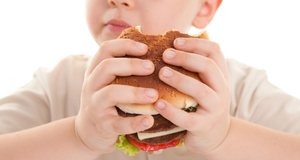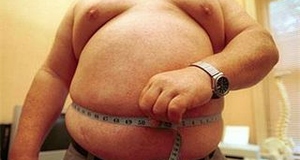Featured Article:Childhood Obesity: Prevention and the Role of School Psychologists
By
2010, Vol. 2 No. 12 | pg. 1/1
KEYWORDS:
Instances of childhood obesity in the United States have increased substantially in recent years. In fact, studies of incidence of obesity over time revealed that, in the period of 25 years, rates increased 2.3 to 3.3-fold in the United States and about 2.8-fold in England (Ebbeling et al., 2002). Astonishingly, between 16-33% of American children and adolescents meet the criteria for being categorized as obese (aacap.org, 2008), which is defined as being in the ninety-fifth percentile or higher in body mass index or BMI (Klein & Dietz, 2009). 300,000 deaths each year are attributable to unhealthy weight gain due to poor diet and lack of exercise, and the yearly financial toll on the U.S. for problems associated with obesity was estimated to be about $117 billion in 2000 (aacap.org, 2008; Weschler et al., 2004). Further, according to the Journal of Applied School Psychology (2008), overweight children are at high risk for an array of correlated medical and psychiatric difficulties. It is clear that the quality of life of these children is significantly impaired (Ward-Benoche et al., 2008). What can school psychologists do to help in the prevention of childhood obesity? Klein & Dietz (2009) attest to the fact that obesity prevention is essential in improving the health of the general public and controlling health care costs. This text will discuss obesity and childhood obesity as a disorder with a cause, review some of the psychosocial problems associated with childhood obesity, offer opportunities for school-based obesity prevention programs and precedents, and point to the role of the school psychologist within these programs. Childhood Obesity as a DisorderBut how is childhood obesity a disorder? The U.S. Surgeon General has identified obesity as an “epidemic” and “one of the greatest health problems facing the nation today” (Weschler et al., 2004, p. 4). One in three children in the United States is overweight or obese, and the rise in obesity prevalence is associated with “increased availability and consumption of high-calorie food, declines in physical activity, and increased media use” (Klein & Dietz, 2009, p. 388). Obesity, like other classified disorders, prevents a child from functioning at his or her ideal capability. It is a physical condition where normal and salubrious operation is disrupted.The National Association of state Boards of Education (NASBE) alleges that “health and success in school are interrelated. Schools cannot achieve their primary mission of education if students and staff are not health and fit physically, mentally, and socially” (Weschler et al., 2004, p.4). Physical risks include high blood pressure, diabetes, breathing problems, increased risk of heart disease, early puberty or menstruation, sleep disorders like apnea, high cholesterol, and trouble sleeping (aacap.org, 2008; MayoClinic.com, 2010). Moreover, poor health and obesity can result in learning setbacks or even disabilities, and these physical conditions also coincide with the presence of numerous psychosocial problems (Martinez, 2004). That is, obesity inhibits optimal health and consequently causes psychological complications, psychosocial complications, and can lead to academic difficulties (Martinez, 2004). A condition which is capable of presenting these obstacles for a child must undoubtedly be regarded as a disorder. Poor eating habits, overeating or binging, lack of exercise, family history of obesity, stressful life events or changes, medical illness such as endocrine or neurological problems (although this accounts for less than 1% of obese children), medications, family and/or peer problems can all contribute to obesity (aacap.org, 2008). Ebbeling et al. (2002) indicate that in the United States, “prevalence of obesity [in children] has risen more than twice as fast among minority groups,” and hypothesize that “the urban poor in developed countries might be especially vulnerable because of poor diet and limited opportunity for physical activity” (p. 473). A connection between childhood obesity and adiposity has also been established. The size and number of adipocytes in some children is excessive. Adipose tissue secretes bioactive peptides, which are called adipokines, and these act locally through autocrine, paracrine and endocrine effects (Ronti et al., 2006). In obesity, the increased production of most adipokines impacts multiple functions such as appetite and energy balance, immunity, insulin sensitivity, blood pressure, and lipid metabolism, all of which are linked with cardiovascular disease (Ronti et al., 2006). Some children seem to display a mutation in leptin, a hormone normally produced by adipocytes and secreted in proportion to body fat mass (Ebbeling et al., 2002). Psychosocial Problems Related to Childhood ObesityIn order to fully grasp the magnitude of this disorder, the findings of relevant studies pertaining to psychosocial ramifications should be discussed. Although there are arguably others—and many seem to be perplexingly interrelated—the most distressing psychosocial consequences resulting from childhood obesity seem to be bullying and taunting, self-esteem issues and anxiety, depression, and eating disorders. Ebbeling et al. (2002) contend that obese children are very often stereotyped as unhealthy, academically incompetent, socially inept, unhygienic, and lazy. Even healthcare providers knowledgeable in the areas of obesity and treatment tend to retain these negative stereotypes to some extent (Ebbeling et al., 2002). In addition, overweight children are often bullied and taunted by their peers, which can be extremely upsetting. Adverse psychosocial effects of obesity are “often more severe among white children, particularly girls, than in other ethnic groups” (Ebbeling et al., 2002). Strauss (2000) asserts that “negative attitudes toward obese children begin quite young and may be difficult to change” (p. 5). It cannot be negated that self-esteem and self-concept are especially salient during the preadolescence years, and that adolescence is a period of extensive self-criticism and turmoil in terms of developing a self-concept (Ward et al., 2010). Overweight children as young as five years of age can start to develop a negative self-image, according to Ebbeling et al. (2002), and “obese adolescents exhibit declining degrees of self-esteem associated with sadness, loneliness, nervousness, and other high-risk behaviors” (p. 474). Importance of body image and low self-esteem seems to be lowest among white and Hispanic obese girls (Strauss, 2000). Anxiety can be also be a by-product of obesity, which may contribute to lower self-esteem in older children and adolescents (Strauss, 2000). The condition of obesity can also prompt depression in children, a complication bringing with it a host of new problems. Untreated depression during adolescence carries severe short- and long-term consequences. Pinto-Foltz et al. (2009) state that “adolescents with untreated depression have impaired functioning in all domains, lower academic achievement, more unintended pregnancies, increased incidence of suicide, and are more likely, than adolescents without depression, to use substances like tobacco, alcohol, and illegal drugs” (p. 37). Long-term consequences of depression involve problems resulting from poor overall health (Pinto-Foltz et al., 2009). Anxiety and self-esteem issues associated with childhood obesity can generate the development of various eating disorders. These can include serious problems like overeating and bingeing, anorexia, bulimia, and other types of eating disorders. Among adolescent girls especially, depression related to obesity is associated with anorexia nervosa (Pinto-Foltz et al., 2009). The School Psychologist’s Role in the Prevention of Childhood ObesityWard-Benoche et al. (2008) contend that health professionals and school psychologists are very likely to be responsible for the creation and implementation of prevention and intervention programs in order to help reverse unhealthy trends in overweight students. Of course, exercise has many physical benefits: it is associated with increased life expectancy and a decreased risk of cardiovascular disease. It helps in controlling weight, reducing blood pressure, raising HDL or “good” cholesterol, reducing the risk of diabetes and some types of cancer, and helps to improve psychological well-being including self-confidence and self-esteem (AHA, 2010). The American Heart Association (2010) recommends that children and adolescents participate in at least 60 minutes of moderate to vigorous exercise every day. Ward-Benoche et al. (2008) describe the design and implementation of a school-based obesity prevention program in Arkansas. The study was evaluated for “assessment of feasibility, acceptability to the school system, and practical utility” (Ward-Benoche, 2002, p. 249). Goals of the program entailed improving nutritional intake, increasing physical activity and fitness, and offering goal-setting and problem-solving skills that could assist in long-term health behavioral changes. Program curriculum was incorporated into physical education classes and personnel consisted of principals, school psychologists, and nursing students serving as instructors in partial fulfillment of their community health clinical requirements (Ward-Benoche et al., 2002). Activities included: discussions and examples of food labels; reviews of popular fast food restaurants’ nutritional information; using plates to color students’ most recent dinner and to review portion size and fruit and vegetable colors; and using the Behavioral Chain Worksheet to understand antecedents to overeating, poor nutritional choices, or sedentary behavior, leading to a discussion of ways to alter those behavioral sequences. The physical activity portion of this program encountered high class participation through traditional activities like basketball and student-requested activities (Ward-Benoche et al., 2002). The nursing students directing the program reported that the project was a useful way to implement empirically-based methods in a community setting, was effective for teaching nutritional information, and was successful in teaching about exercise (Ward-Benoche et al., 2002). Based on this study, Ward-Benoche et al. (2002) are optimistic about the feasibility of school-based obesity prevention programs aimed at youth. In the Summer 2010 publication of The School Psychologist, Robert Motta, Ph.D., discusses exercise as an intervention for children with anxiety and depression, some of which can surely be attributed to societal pressures dealing with body image and obesity. He writes, “physical activity has been shown to improve mood and reduce symptoms of depression and anxiety [which]… may stem from an increase in the release of endorphins” (p. 11). Empirical findings in this article also suggest that exercise benefits psychological functioning as well. Further, children who were rated as inactive or not meeting fitness requirements in these studies reviewed had an increased risk for depressive symptoms (Motta, 2010). Results indicated notable reductions in anxiety and depression following aerobic exercise intervention and that these reductions were maintained in a one-month follow-up (Motta, 2010). Exercise programs fit naturally into children’s conceptions of school, Motta (2010) argues, since nearly all schools have some form of mandated physical training. So how can school psychologists help when it comes to obesity prevention programs? School psychologists can play a critical role in the prevention of childhood obesity by accessing Michelle Obama’s Let’s Move! Initiative and by organizing its implementation in schools. First, the school psychologist should establish a school health advisory council comprised of students, parents, teachers, and administrators, and participate in the council’s proceedings. As recommended by the Initiative, this council should adhere to the CDC’s document titled “Make a Difference At Your School: Key Strategies to Prevent Obesity” (Let’s Move! Initiative, 2008). Second, the school psychologist should see to it that the school joins the US Healthier Schools Challenge. The completion of this step would provide valuable criteria for school food quality, physical activity and education, and nutrition education. It would also equip the school with educational and technical assistance materials that promote key aspects of the Dietary Guidelines, including a Menu Planner for Healthy School Meals, which contains tips on serving more whole grains, fruits, and vegetables, and lower amounts of sugar, sodium, and saturated and trans fats in school menus (Let’s Move! Initiative, 2008). Third, the school psychologist should be a role model in terms of a healthy lifestyle by encouraging the school staff to be active and consume healthy foods. An evaluation of worksite policies should be performed, and goals should be determined for improving healthy behaviors among staff (Let’s Move! Initiative, 2008). Fourth, the school psychologist can ascertain that the curriculum integrates nutrition and physical education. Activities should be age-appropriate and relevant for students (Let’s Move! Initiative, 2008). Finally, the school psychologist can urge the planting of a school garden and help students develop a partnership with local businesses, parents, or other community groups. Schools can also choose to incorporate the school garden into lessons like science or cooking. This would ensure that students see first-hand how healthful food is produced (Let’s Move! Initiative, 2008). In addition to the Let’s Move! Initiative, school psychologists can benefit from utilizing resources offered through The School Nutrition Association (www.asfsa.org) and The National Food Service Management Institute (Weschler et al., 2004). Further, Action for Healthy Kids (AFHK) is a national governmental organization that is capable of deploying teams in any state to develop and implement state action plans for improving school policies and programs in nutrition and physical activity (Weschler et al., 2004). Another helpful resource for school psychologists is LiveWell Colorado, which awarded $3.7 million this spring to 22 communities across the state to fund obesity prevention efforts, especially those focused on children (LiveWell Colorado, 2010). To be successful in this endeavor against obesity, school psychologists must collaborate with public health, school nurses, and registered dieticians in obtaining funding for grants so that they can help the children at their schools learn healthy habits. Weschler et al. (2004) concede that schools cannot single-handedly solve the obesity epidemic on their own, but they emphasize that this problem is unlikely to be impeded without strong school-based policies and programs. Schools and school psychologists play an important role in this effort because “well-designed, well-implemented school programs can effectively promote physical activity, healthy eating, and reductions in television viewing time” and “emerging research documents the connections between physical activity, good nutrition, physical education and nutrition programs, and academic performance” (Weschler et al., 2004, p. 6). Schools, Weschler et al. (2004) argue, can help students embrace and maintain healthy eating and physical activity behaviors. References ABC News. (2010). Michelle obama: ‘let’s move’ initiative battles childhood obesity. Retrieved September 30, 2010 from http://abcnews.com/GMA/Health/michelle-obama-childhood-obesity-initiative/story?id=9781473 American Academy of Child & Adolescent Psychiatry. (2008.) Obesity in children and teens. Retrieved September 30, 2010 from http://www.aacap.org/cs/root/facts_for_families/obesity_in_children_and_teens American Heart Association. (2010). Physical activity and children. Retrieved October 3, 2010 from http://www.heart.org/HEARTORG/Getting Healthy/Physical-Activity-and-Children_UCM_304053_Article.jsp Ebbeling, C.B., Pawlak, D.B., & Ludwig, D.S. (2002.) Childhood obesity: public health crisis, common sense cure. Lancet, 360: 473-482. Klein, J.D., & Dietz, W. (2009.) Childhood obesity: the new tobacco. Health Affairs, 29 (3): p. 388-392. Let’s Move! Initiative. (2008.) Schools take action: 5 simple steps to success. Retrieved October 3, 2010 from http://www.letsmove.gov/pdf/TAKE_ACTION_SCHOOLS.pdf LiveWell Colorado. (2010.) Report to the kitchen! colorado school food service teams head to boot camp. Retrieved October 5, 2010 from http://www.marketwire.com/press-release/Report-to-the-Kitchen-Colorado-School-Food-Service-Teams-Head-To-Boot-Camp-1270937.htm MayoClinic.com. (2010.) Childhood obesity: complications. Retrieved October 3, 2010 from http://www.mayoclinic.com/health/childhood-obesity/DS00698/DSECTION=complications Motta, R.W. (2010.) The role of exercise in reducing childhood and adolescent ptsd, anxiety, & depression. The School Psychologist, 64 (3): p. 10-13. Pinto-Foltz, M.D., Hines-Martin, V., & Logsdon, C.M. (2009.) How adolescent girls understand and manage depression within their peer group: a grounded theory investigation. School Mental Health, 2: 36-43. Poniers, A. (2007.) Childhood obesity: how do the health behaviors of Colorado parents affect their children? Health Watch (Health Statistics section) published by CDPHE, 63: p. 1-6. Ronti, T., Graziana, L., & Mannarino, E. The endocrine function of adipose tissue: an update. (2006.) Clinical Endocrinology, 64 (4): 355-365. Strauss, R.S. (2000.) Childhood obesity and self-esteem. Pediatrics, 105: 1-5. Ward, S., Sylva, J., & Gresham, F.M. (2010.) School-based predictors of early adolescent depression. School Mental Health, 2: 125-131. Ward-Benoche, W.L., Gance-Cleveland, B., Harris, M.M., & Dean, J. (2008.) Description of the design and implementation of a school-based obesity prevention program addressing needs of middle school students. Journal of Applied School Psychology, 24: 247-263. Weschler, H., McKenna, M.L., Lee, S.M., & Dietz, W.H. (2004.) The role of schools in preventing childhood obesity. The State Education Standard, 5 (2): p. 4-12. Suggested Reading from Inquiries Journal
Inquiries Journal provides undergraduate and graduate students around the world a platform for the wide dissemination of academic work over a range of core disciplines. Representing the work of students from hundreds of institutions around the globe, Inquiries Journal's large database of academic articles is completely free. Learn more | Blog | Submit Latest in Health Science |














